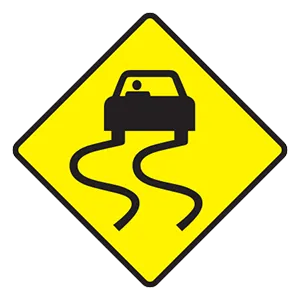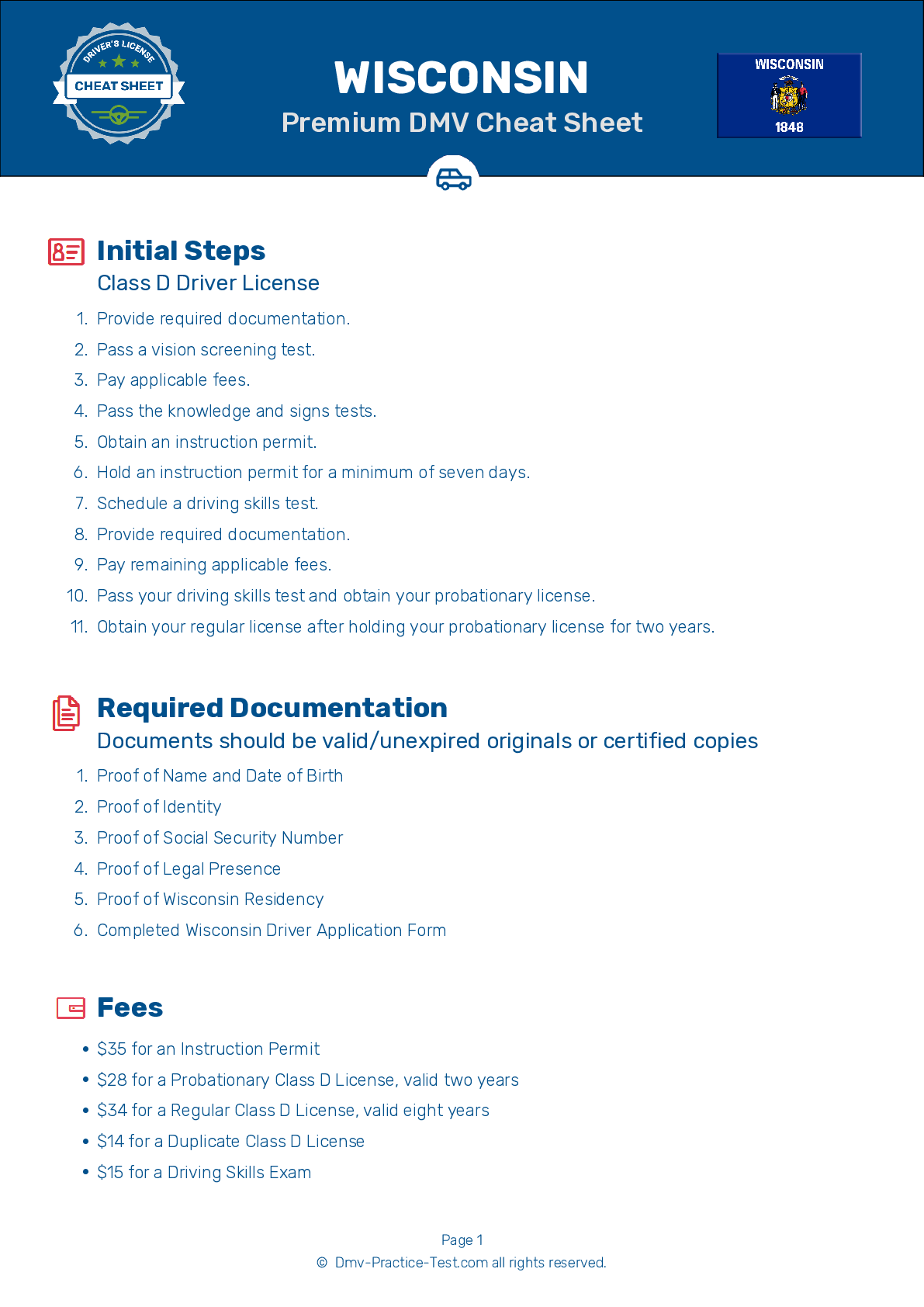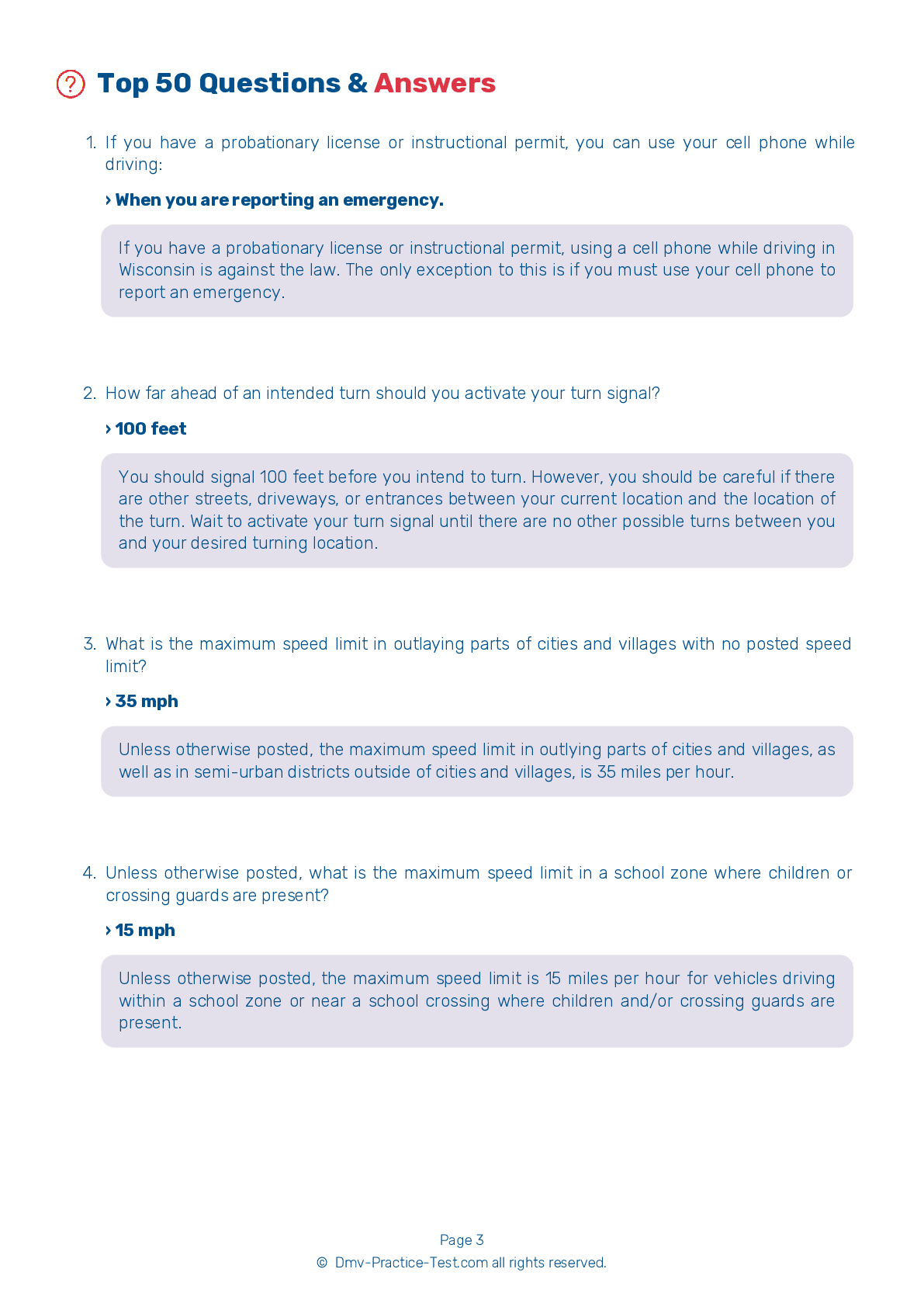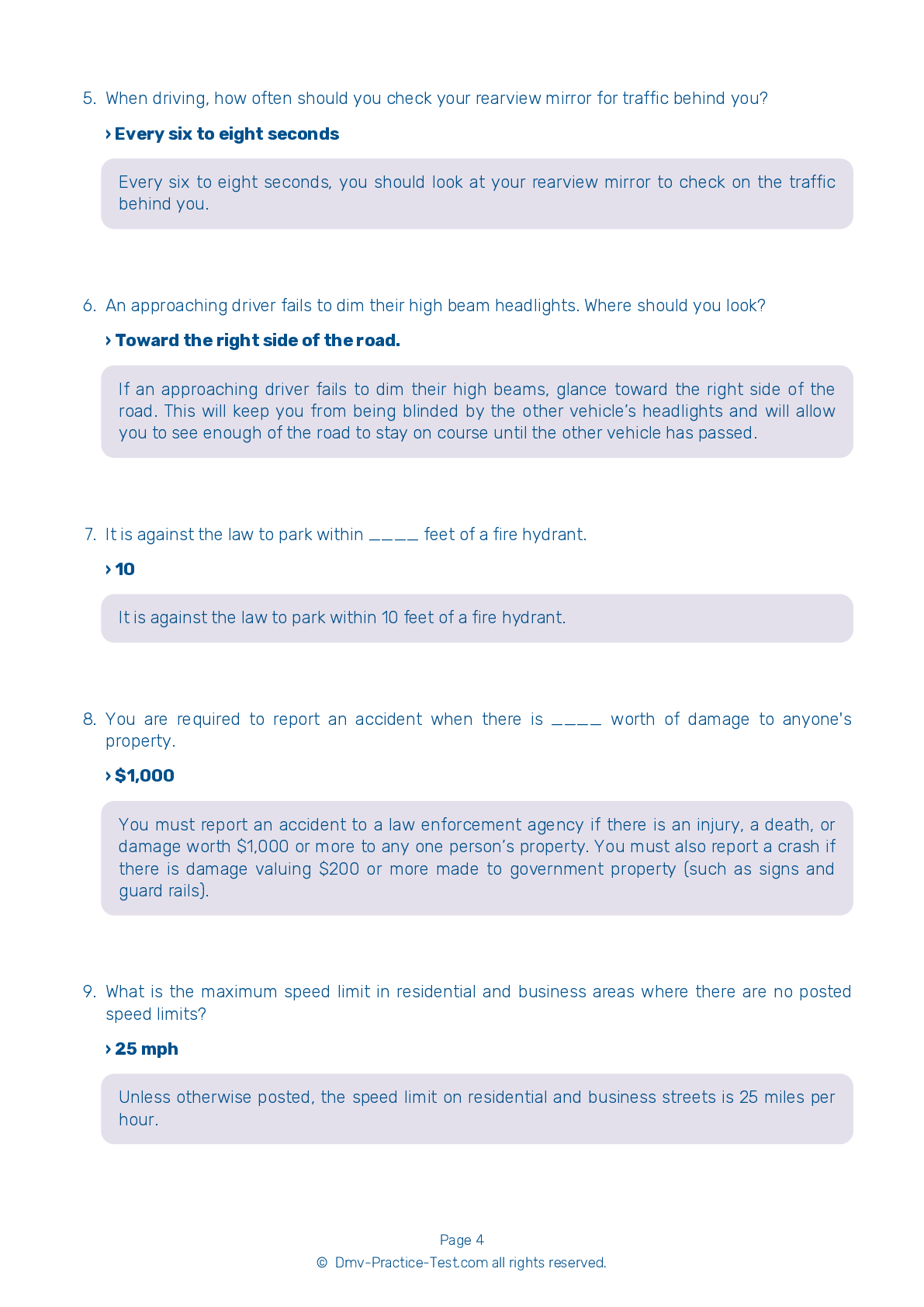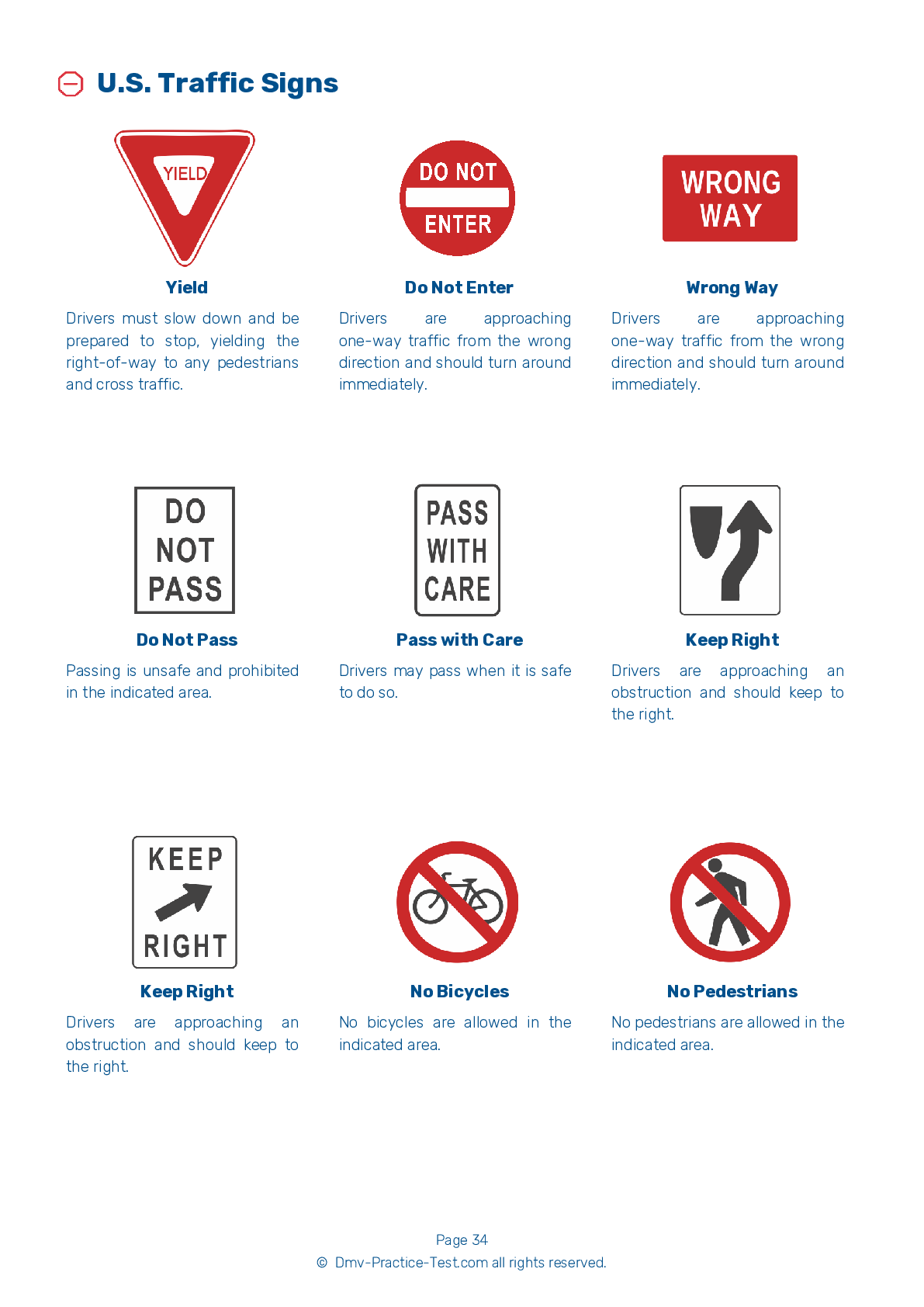FREE Wisconsin DMV Practice Test #2 Page 2 of 7
The Wisconsin DMV practise examinations have been updated for January 2025. It includes questions based on the Wisconsin Driver Handbook's most significant traffic signals and legislation for 2025. Use actual questions that are very similar (often identical!) to the DMV driving permit test and driver's licence exam to study for the DMV driving permit test and driver's licence exam.
On the practise exam, each question gets a tip and explanation to help you remember the concepts. The written component of the official Wisconsin DMV test will include questions about traffic rules, traffic signs, and driving statutes, as well as knowledge from the Driver Handbook.
To obtain a passing grade, you must correctly answer 40 of the 50 questions. Use the practise exam provided by the Wisconsin Department of Motor Vehicles to help you prepare for your instruction permit or driver's licence.
The DMV exam is available in several languages.
Using any kind of testing assistance will result in an automatic fail, and the DMV may take additional action against your driver's licence, so stay away from it.
8 . You are turning onto a two-lane road divided by a broken yellow line. You know immediately that:
Yellow centerlines are used to separate traffic moving in opposite directions. Broken lines may be crossed to pass slower-moving traffic when it is safe to do so.
9 . To improve visibility lowered by rain or fog, drivers should use their:
Low beam headlights should be used when driving in rainy or foggy weather. Even if they do little to help you see, low beams will make it easier for others to see you.
10 . When turning left at an intersection:
When turning left at an intersection, yield the right-of-way to oncoming traffic and pedestrians. Once the intersection is clear and applicable signals allow, you may complete the turn.
11 . If you are going to stop or slow down when another driver does not expect it:
If you are going to stop or slow down at a place where another driver may not expect it, quickly tap your brake pedal three or four times. Your brake lights will indicate to other drivers that you plan to slow down.
12 . What is the maximum speed limit in residential and business areas where there are no posted speed limits?
Unless otherwise posted, the speed limit on residential and business streets is 25 miles per hour.
14 . When driving on a slippery surface, such as snow or ice:
To prevent skidding on slippery surfaces, you should shift to a low gear before going down a steep hill. You should also follow farther behind the vehicle in front of you than you normally would. Quick stops should be avoided. Unless you have antilock brakes, pump the brakes to slow or stop.
Need Car Insurance? No problem!
Compare the best rates in Wisconsin and find a personalized policy that meets your needs.
1. Are You Currently insured ?
2. Married ?
3. Do you own your Home?
4. Do you have more than 1 car ?
5. Have you or a Family Member Honorably Served in U.S. Military ?
6. Your Name
7. Age
8. Zip code
IMPORTANT REMINDER:Auto Insurance is Mandatory to drive in Wisconsin. Get covered before you hit the road to avoid any fines.
Ranked by best match
